Drought-tolerant trees – 10 resilient choices for low-maintenance yards
These reliable and robust options are ideal for warmer climes with less rainfall

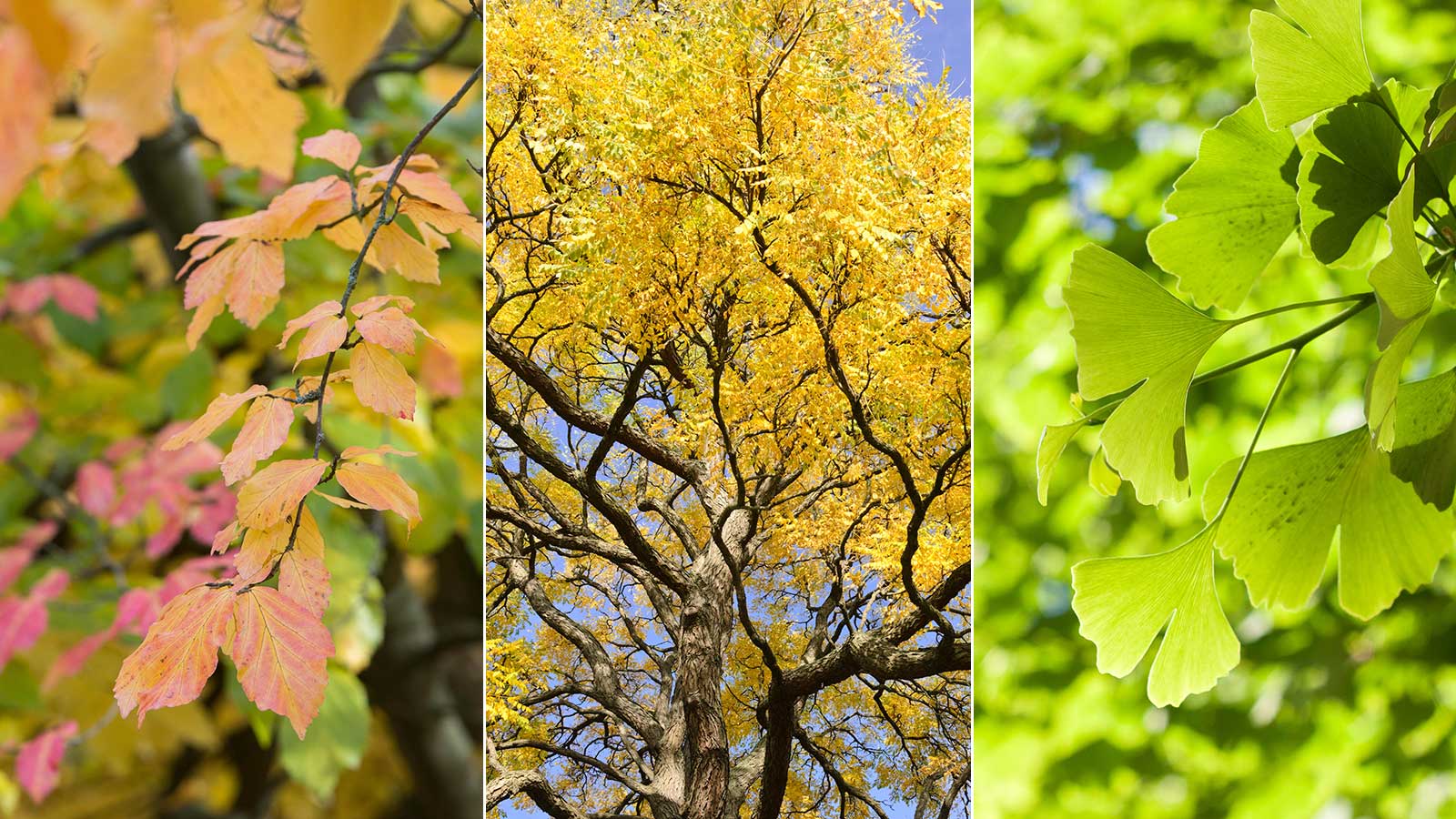
If your backyard is prone to long spells without rain, opting for drought-tolerant trees is a smart move. Their ability to thrive despite drier periods will give you peace of mind, especially when summer temperatures soar.
There are plenty of leafy options to choose from, whatever the size and style of your yard. Plant them alongside drought-tolerant plants and you can enjoy a tough-yet-beautiful garden that, once established, won't require endless time and effort spent watering (and worrying).
10 easy-care trees that will survive dry spells
From large trees with shady canopies to small specimens with colorful fall foliage, these options are definitely worth considering for dry gardens.
1. Kentucky coffeetree

The Kentucky coffeetree has golden foliage in the fall
- Best for: Large, urban plots
- Type: Deciduous
- Mature height: 60ft
- Mature spread: 40ft
- Hardiness: USDA 3-8
Also known as Gymnocladus dioicus, the Kentucky coffeetree, available from FastGrowingTrees.com, is a great choice if you have the space for it. 'Beyond being drought- and heat-tolerant, it's a stunner,' says Bryan Clayton, a seasoned landscaping pro with 22 years of experience. 'Its unique bark and big leaves that turn yellow in fall make it a standout addition to any yard.'
It's a slow-grower, but eventually its leafy canopy can offer a welcome spot of shade in summer. The Kentucky coffeetree also provides interest in spring, when it produces greenish-white flowers.
Not only is it resilient in dry conditions, but it's also tolerant of pollution, making it well-suited to urban outdoor spaces. It isn't particular about soil type, as long as it's well-drained, but ensure it's planted somewhere that gets plenty of sun.

Bryan is the CEO and Co-founder of GreenPal, an online marketplace connecting homeowners with local lawn care professionals. Bryan's entrepreneurial journey started in landscaping; he founded Peach Tree Inc., one of the largest landscaping companies in the state of Tennessee, growing it to over $10 million a year in annual revenue before it was acquired by Lusa Holdings in 2013.
2. Crepe myrtle
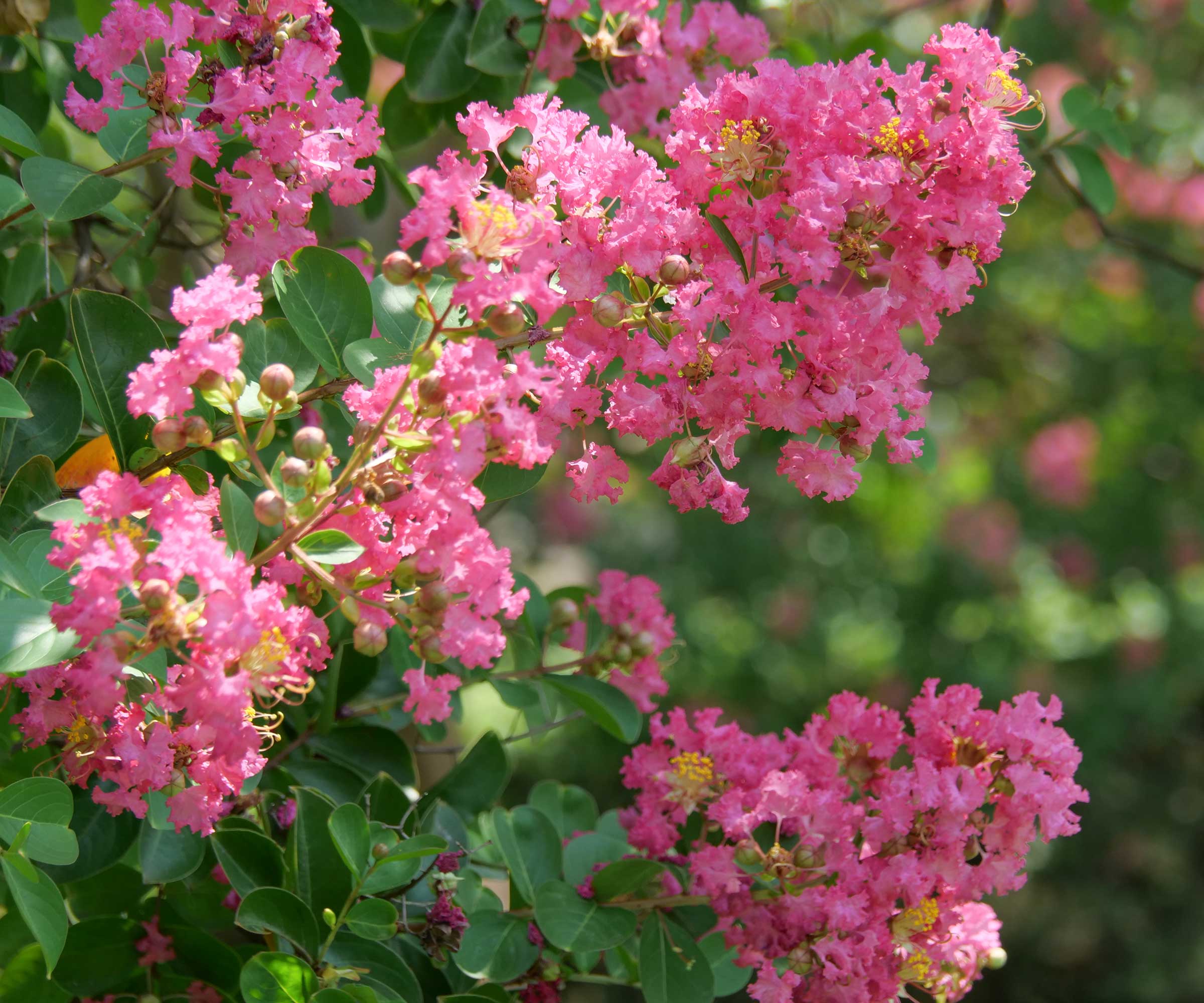
Crepe myrtles produce fabulous pink blooms
- Best for: Pink flowers
- Type: Deciduous
- Mature height: 3-50ft, depending on variety
- Mature spread: Up to 25ft
- Hardiness: USDA 6-9
Arborist Rebecca Johnson deems crepe myrtles (Lagerstroemia indica) a 'southern landscape staple', with their patterned bark and showy flowers making them a common site in Texas landscapes. They are native to Asia, not the US, she adds. However, they are not indicated as invasive plants.
Design expertise in your inbox – from inspiring decorating ideas and beautiful celebrity homes to practical gardening advice and shopping round-ups.
'The main pests of this tree are aphids and crepe myrtle bark scale (CMBS),' Rebecca continues. The current recommendations to deal with the latter are to scrub the stems of the tree with a soft brush and a mild solution of dishwashing soap. 'This removes the sooty mold caused by the honeydew released by the scale (which is also released by aphids).'
Rebecca also highlights the importance of proper crepe myrtle pruning, advising against regularly topping the tree. Instead, she recommends choosing the right-size tree for the spot: there is a range of crepe myrtle varieties available to buy from Nature Hills.

Rebecca is an International Society of Arboriculture (ISA) Certified Arborist and loves helping trees and the people who care for them. She regularly hosts educational opportunities for fellow arborists and the general public, in addition to hosting Women in Arboriculture sessions. She holds a degree in Forestry from Oklahoma State University.
3. Palo verde
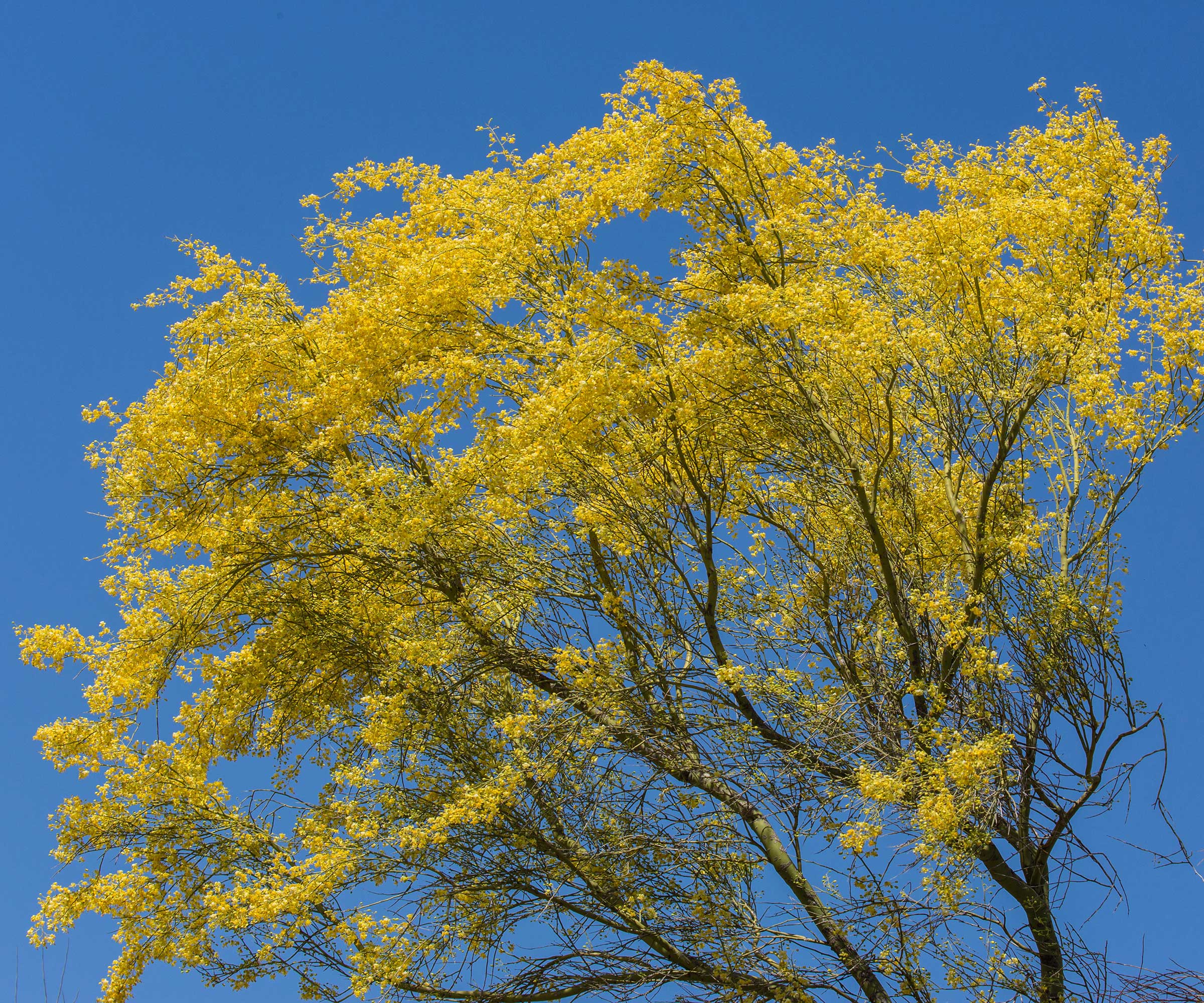
Springtime flowers make this drought-tolerant tree a show-stopper
- Best for: Yellow flowers
- Type: Deciduous
- Mature height: 15-30ft+
- Mature spread: Up to 30ft
- Hardiness: USDA 9-10
'This tree is built for arid conditions,' says Bryan. 'And it doesn't just survive, it thrives, bursting into a display of bright yellow flowers in spring.'
Scientifically, it's known as Parkinsonia. 'The common name "palo verde" refers to the green trunk, branches and twigs,' notes Rebecca. 'While most varieties are very thorny, there is a thornless variety – "Desert Museum" – which is available in most nurseries,' she adds.
'The crowns tend to be open, allowing sunlight to pass through to plants underneath the tree.'
4. Sweet acacia

The pom-pom flowers of this tree have a sweet fragrance
- Best for: Sweet-smelling flowers
- Type: Deciduous in colder climates
- Mature height: 15-20ft
- Mature spread: 15-20ft
- Hardiness: USDA 9-11
Acacia smallii, or sweet acacia, is very drought- and alkaline-tolerant, says Rebecca. 'In the spring, it is covered in beautiful mustard-yellow flowers that have a sweet scent.'
Low-maintenance and generally pest-free, it does best in full sun and well-drained soil. 'This tree is not recommended for areas with lots of foot traffic due to the thorns, but it’s a tough native tree for areas with less traffic,' Rebecca adds.
5. Sweet gum
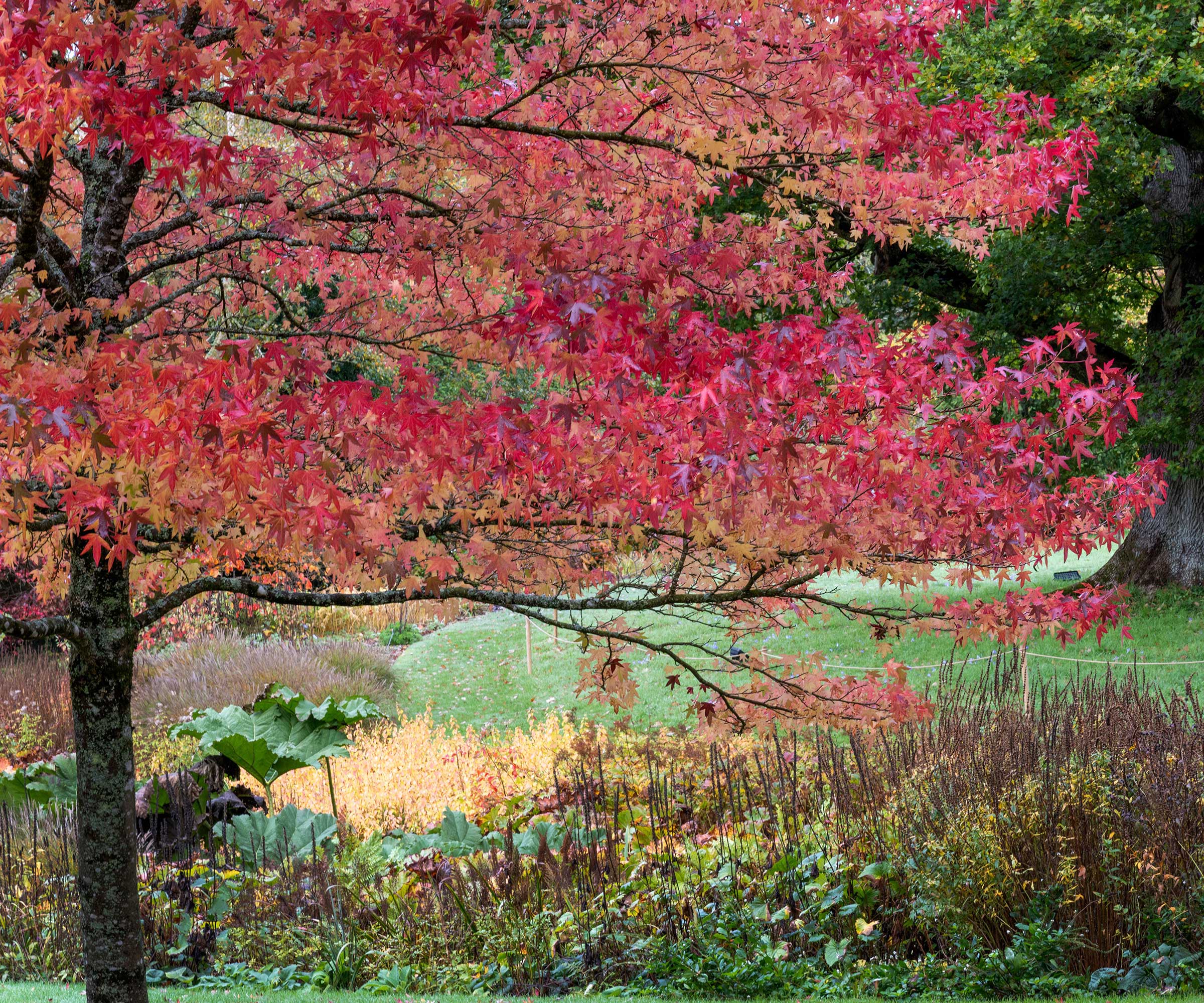
The 'Worplesdon' sweet gum tree
- Best for: Fall color
- Type: Deciduous
- Mature height: Up to 70ft
- Mature spread: Up to 45ft
- Hardiness: USDA 5-9
Sweet gum trees, also called Liquidambar styraciflua, are one of arborist Ned Cromack's drought-tolerant trees of choice. They are one of the best trees for fall color, when their foliage appears to glow with a deep-reddish hue, he says.
These elegant trees are most happy in full sun, Ned adds. In terms of soil, they prefer neutral to acidic types.
You can buy sweet gum trees from Nature Hills.

Ned is a qualified arborist and the Founder of The Bristol Tree Medic. Starting his career in one of the UK’s leading tree nurseries in 2010, he went on to spend over a decade as a tree climber across the UK, Europe, New Zealand and Australia. For him, arboriculture has always been more of a fascination than a job, and an industry that never ceases to inspire.
6. Prickly-ash
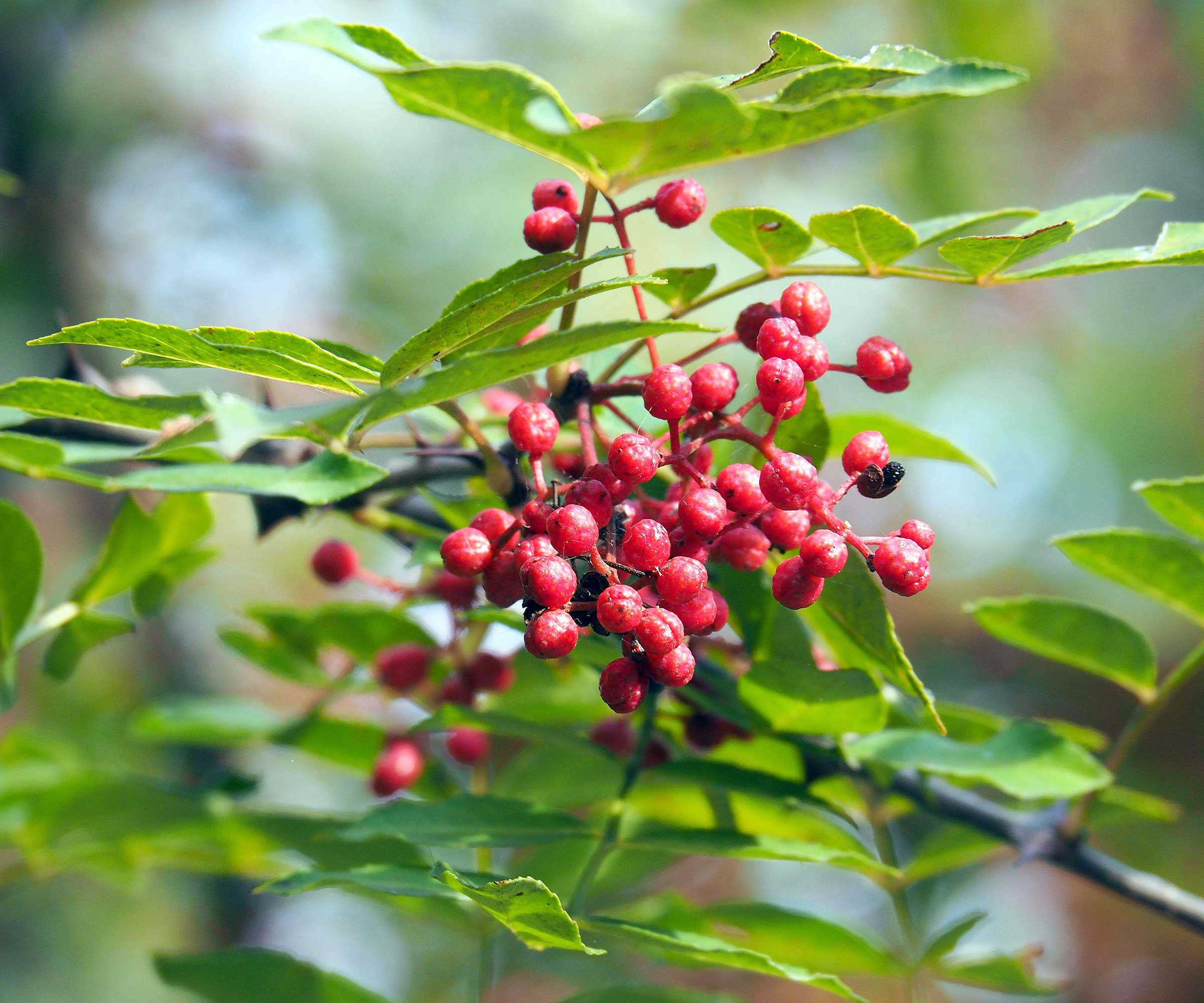
The berries on this tree attract birds
- Best for: Wildlife gardens
- Type: Deciduous
- Mature height: 15-30ft
- Mature spread: Up to 10ft
- Hardiness: USDA 7-9
'Despite the common name, prickly-ash is not a true ash, but instead is in the citrus family,' says Rebecca. This relatively small tree produces clusters of small, greenish flowers in spring that are followed by berries that attract birds. It's also a host species for the giant swallowtail butterfly, notes Rebecca, making it a good option for wildlife gardens.
'However, all parts of this tree have prickles (leading to the common name), which can make it less desirable in areas where it is likely to come into contact with people,' says Rebecca. It prefers sun or partial shade, and neutral to slightly alkaline soil. Scientifically, it's known as Zanthoxylum americanum.
7. Olive
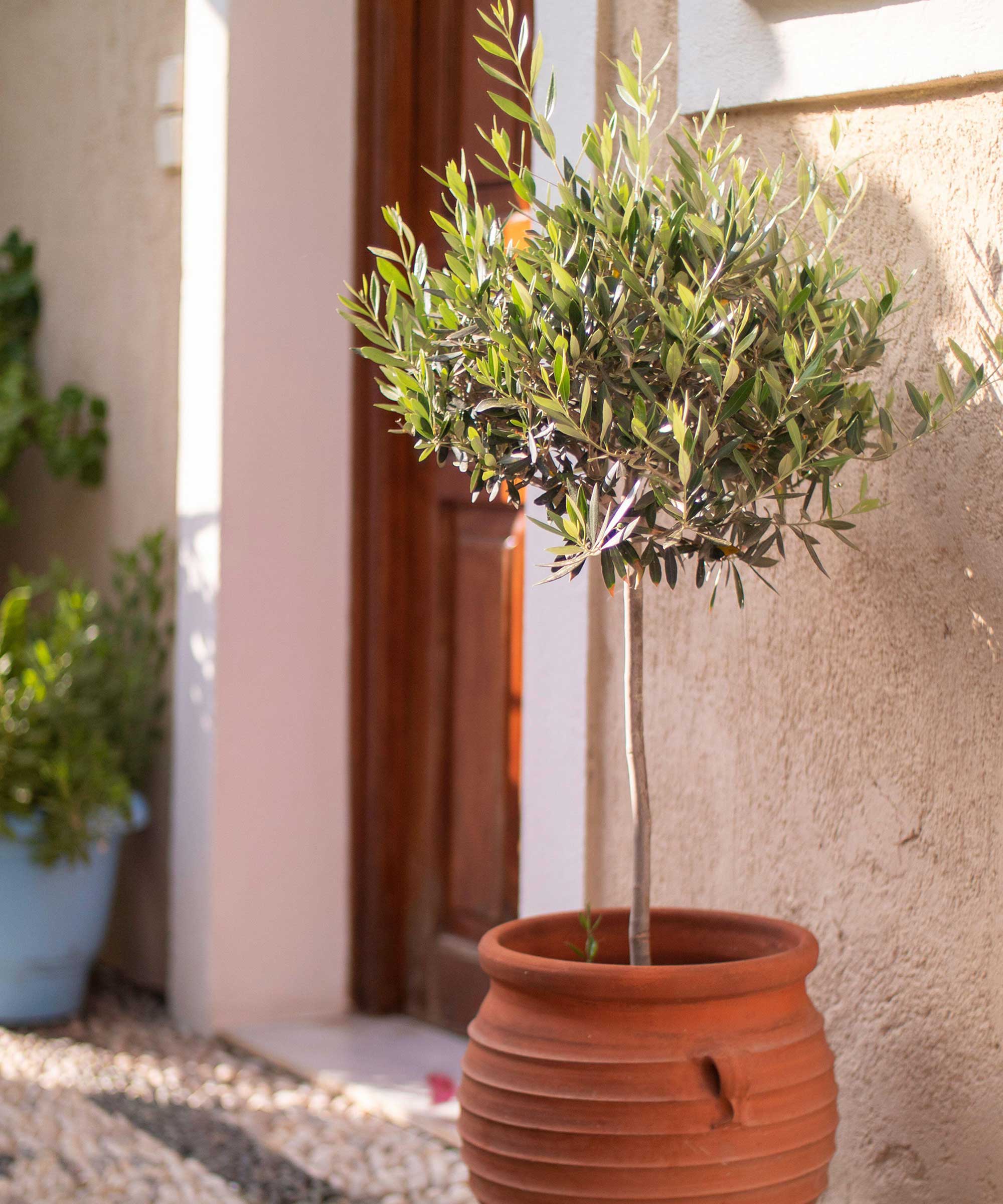
Olives are perfectly paired with rustic terracotta pots
- Best for: Containers
- Type: Evergreen
- Mature height: 6-30ft
- Mature spread: Up to 8ft
- Hardiness: USDA 9-11
Olive trees, with their elegant, silvery foliage, are a beautiful choice if you're looking for drought-tolerant plants for pots. Try placing one on either side of your door for a stylish entrance. They can be planted in the ground, too, provided the soil is well-draining.
Hailing from Mediterranean climes, they like lots of sunshine and a sheltered spot. Annually pruning olive trees in early spring can help to keep them in good shape.
The 'Frantoio' olive tree, available from Nature Hills, is a versatile and popular option.
8. Maidenhair tree
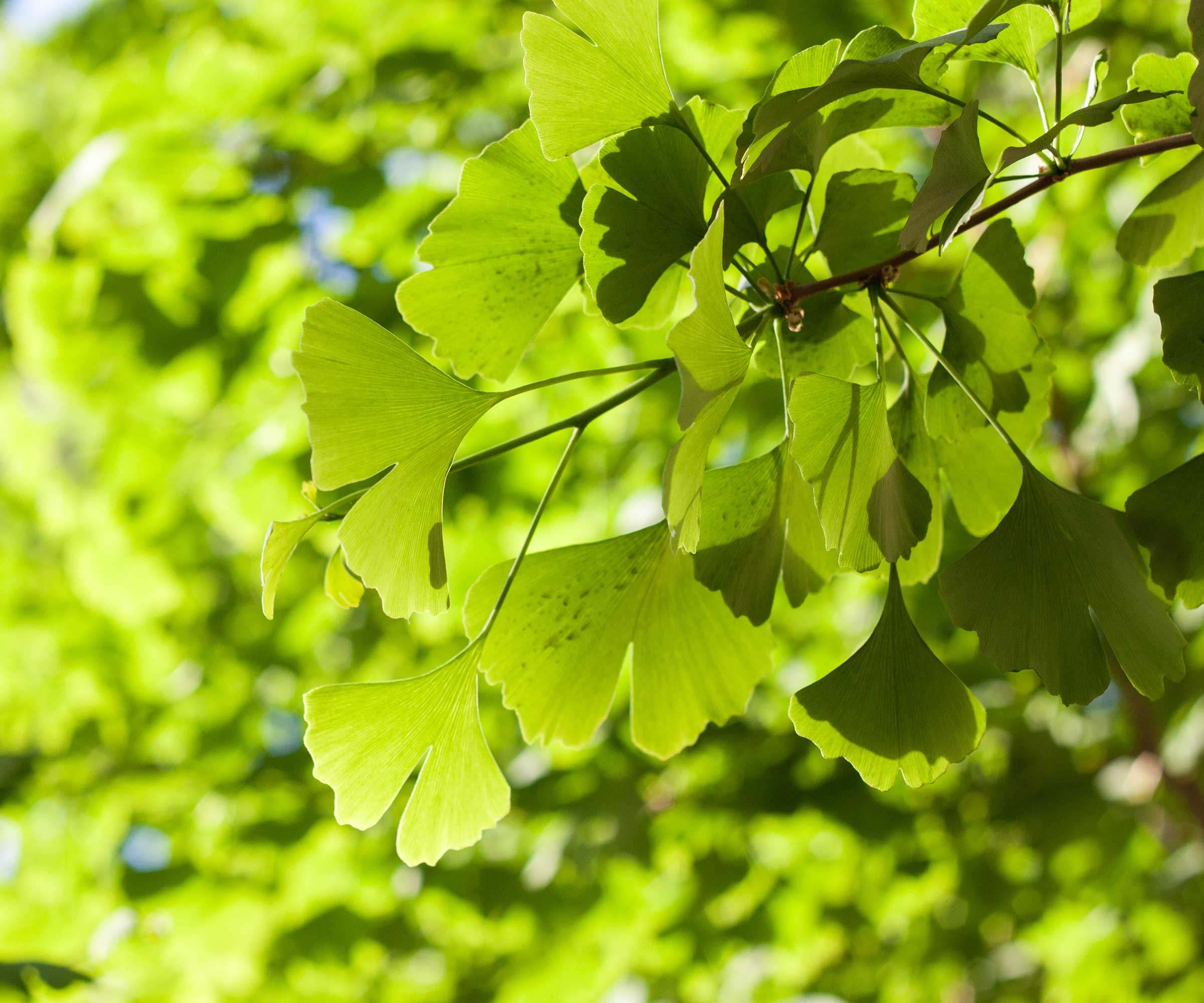
Ginkgos are well-loved for their attractive leaves
- Best for: Pretty, fan-shaped leaves
- Type: Deciduous
- Mature height: Up to 50ft
- Mature spread: Up to 35ft
- Hardiness: USDA 4-9
Native to China, Ginkgo biloba trees (available from FastGrowingTrees.com) are favored for their distinctive, fan-shaped leaves that turn yellow in the fall. As well as being drought-tolerant once established, these trees are also resistant to pests and diseases. They will tolerate pollution, too.
Durable as well as beautiful, they can live for over a thousand years. They are also known as 'living fossils' as there are fossils of their leaves that date back to more than 200 million years ago.
They like well-drained soil and full or partial sun.
9. Live oak

Make a statement with a live oak tree
- Best for: Providing backyard shade
- Type: Tardily deciduous
- Mature height: Up to 80ft
- Mature spread: Up to 100ft
- Hardiness: USDA 7-10
'A large, stately tree, live oak (Quercus virginiana) is widely used as a shade tree in Central Texas,' says Rebecca. 'The tree is "tardily deciduous" which means its leaves stay green through the winter, falling off only when the new leaves push them off in the spring (other than a few leaves shed by the tree for other reasons).
'Once established, the live oak needs little care in the home landscape and is a great tree to have,' Rebecca continues. However, they are susceptible to oak wilt and care should be taken to prevent the spread, she adds.
Pests are typically not a problem, she continues, and mostly cause aesthetic issues, such as galls. 'Other insect pests can be discouraged by not using high nitrogen fertilizer unless needed (as indicated by a soil test).'
Live oaks can be brought from Nature Hills.
10. Persian ironwood
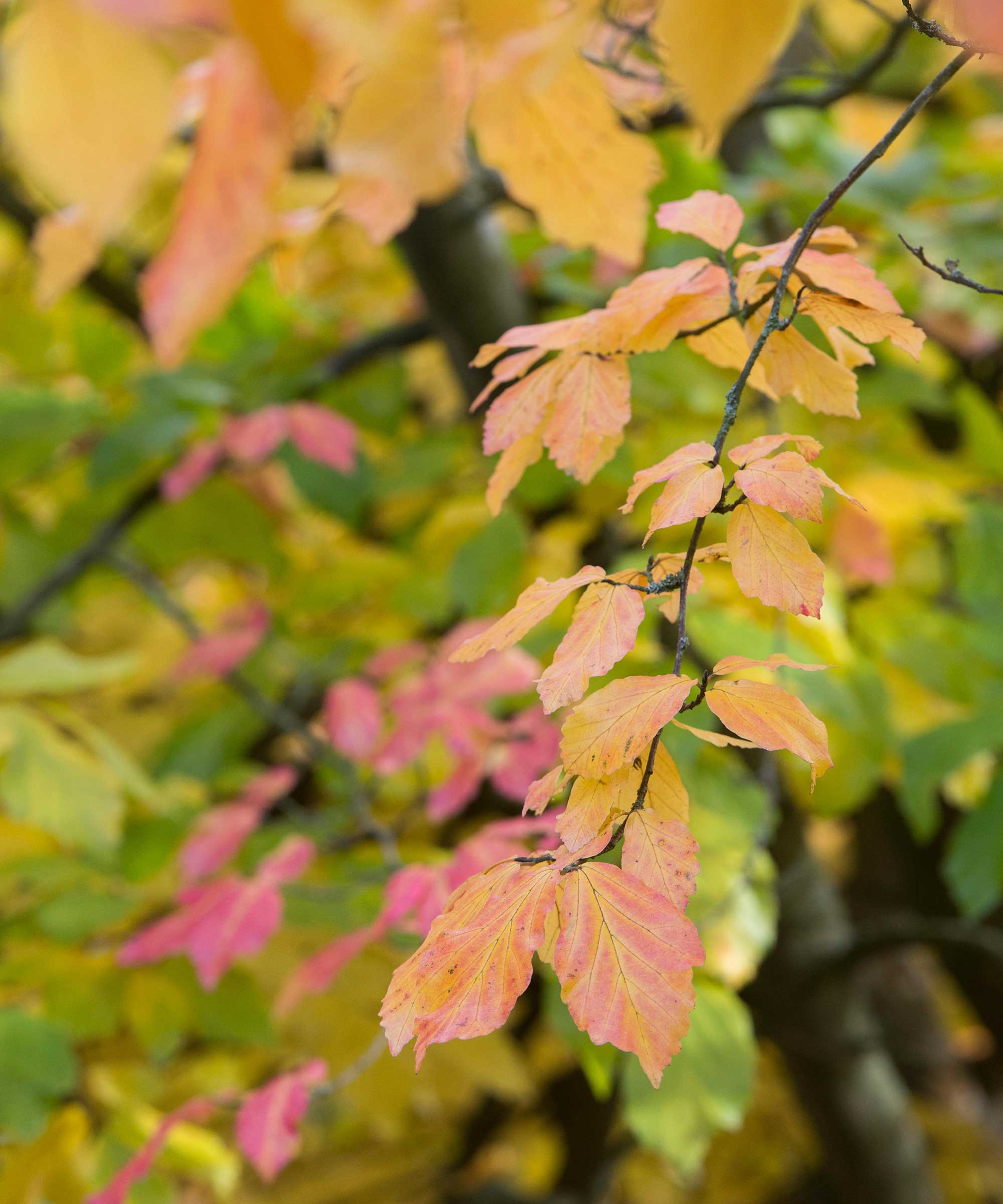
These compact trees have beautiful foliage
- Best for: Smaller yards
- Type: Deciduous
- Mature height: Up to 35ft
- Mature spread: Up to 35ft
- Hardiness: USDA 4-8
'Persian ironwood (Parrotia persica) is drought tolerant once established,' says Ned. The foliage takes on an array of colors throughout the year, and the often-gnarled stems are of interest, too, he adds.
Although a lesser-seen ornamental tree, it is low-maintenance and generally pest- and disease-resistant. Plant it in slightly acidic, well-draining soil in sun or partial shade to help it thrive. It's a great tree for smaller yards.
'The wood is extremely hard, hence the name "Ironwood",' Ned adds.
What are some good drought-tolerant trees to create shade?
Majestic oaks are perfect for creating shade in a yard. Alongside the live oak mentioned above, arborist Rebecca Johnson recommends the Mexican white oak (Quercus polymorpha) and the burr oak (Quercus macrocarpa). Cedar elm is another option, she adds, which has yellow foliage in the fall.
Which drought-tolerant trees are best for a small yard?
If you're choosing drought-tolerant trees for a smaller yard, consider the palo verde, a flowering tree listed above. Other options, recommended by arborist Rebecca Johnson, include the yaupon holly – a small evergreen tree – and the desert willow which has pink, white, or purple flowers.
Investing in drought-tolerant trees can save you some heartache – and water – in the long run, says Bryan Clayton. However, he highlights that 'even these drought-tolerant champs need care,' adding that watering them deeply – but not too often – can make them more resistant to dry spells. It's also important to note that newly planted trees need regular watering for the first few years to help them establish.
Proper pruning is also crucial for helping a tree look great and stay in top health. For larger trees, or if you have any uncertainty, it's best to hire a professional arborist to do it for you.

Holly started writing about gardening five years ago, and she is a regular contributor to Homes & Gardens. She has also written many gardening features for Woman & Home and Real Homes, too. She has previous experience as a professional gardener, where she helped to plant and maintain private gardens. Holly has also looked after allotment plots over the years and loves to grow her own flowers and veggies from seed. In her spare time, she enjoys visiting local gardens, botanical drawing, and tending to her ever-growing collection of houseplants.